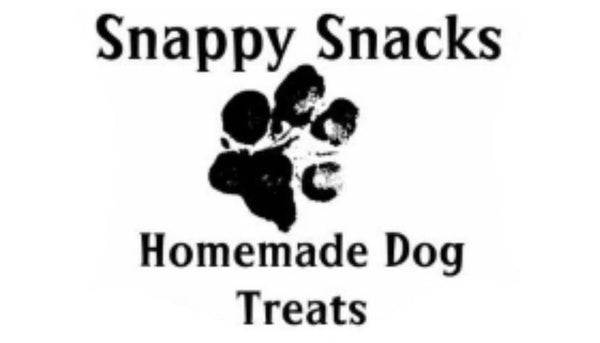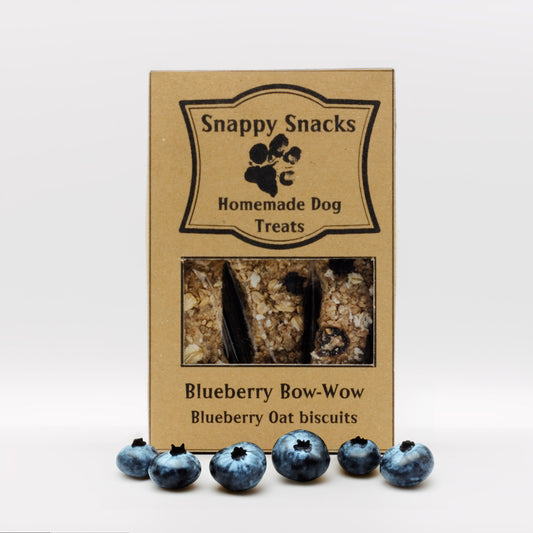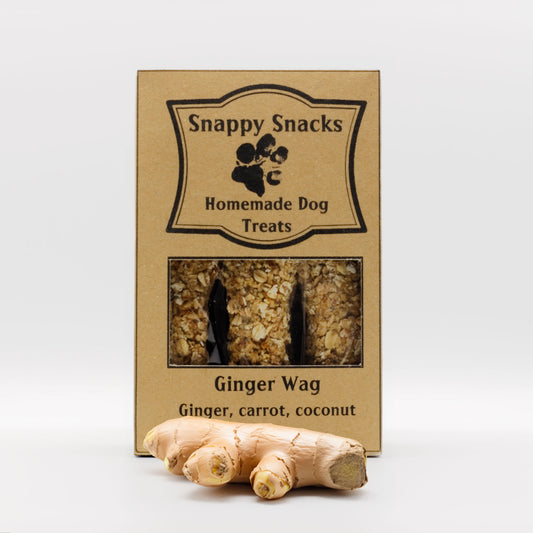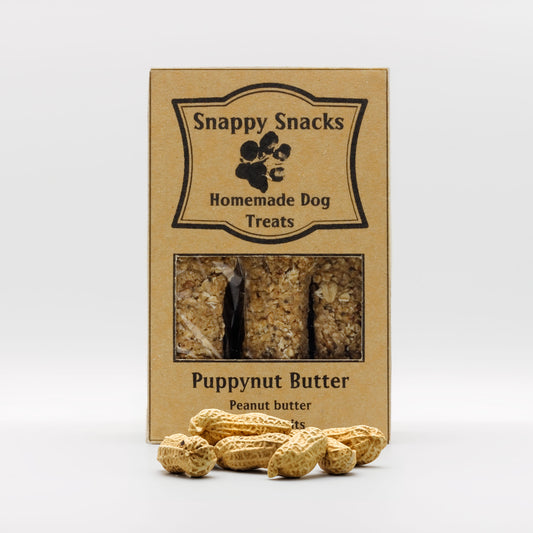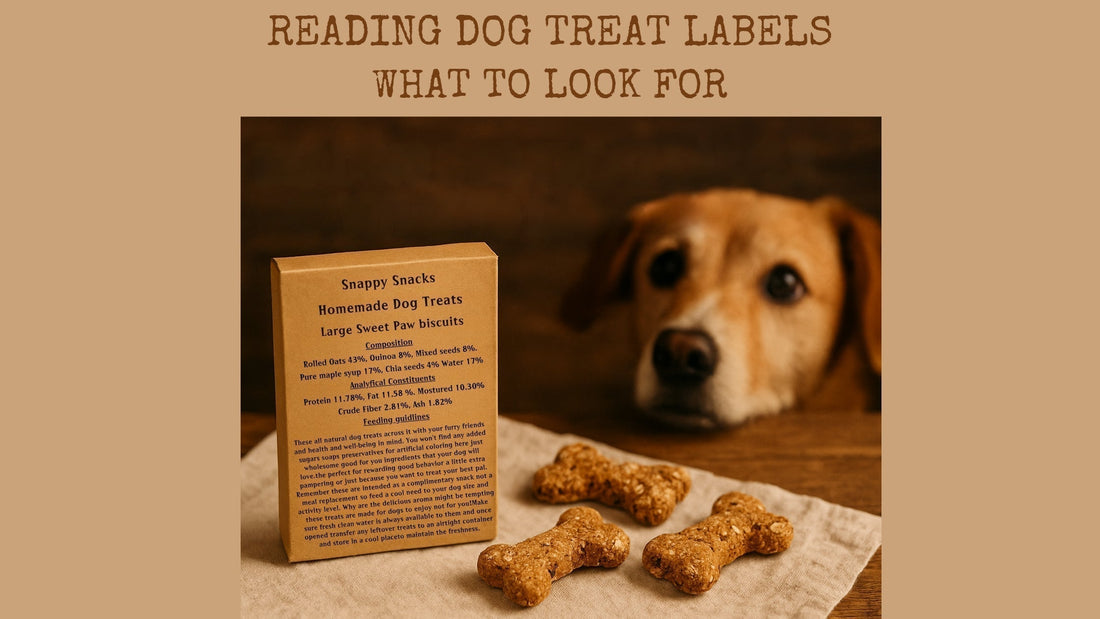
Reading Dog Treat Labels — What to Look for (and What to Avoid)
When it comes to our dogs, we all want the best — but pet treat labels can be confusing, vague, or downright misleading.
What does “animal derivatives” really mean? What’s the difference between “natural” and “nutritious”? And are long ingredient lists always bad?
At Snappy Snacks, we believe in transparency. Here’s a guide to decoding dog treat labels — so you can make informed, healthy choices for your pup.
1. Start With the Ingredients List
Pet food ingredients are listed by weight, from most to least.
So if the first ingredient is “wheat flour” or “animal by-products,” that’s the bulk of what your dog is eating.
✅ Look for:
-
Named, whole ingredients like “oats,” “peanut butter,” “banana”
-
Short, readable ingredient lists
- Familiar, human-grade food items
❌ Avoid:
-
“Meat meal,” “animal digest,” “derivatives” (vague sources)
- Artificial colours (E numbers), preservatives (BHA/BHT), or sweeteners
📌 Rule of thumb: If it sounds like something you wouldn’t eat yourself — your dog probably shouldn’t either.
2. Watch for Hidden Additives
Even treats labelled “natural” can hide synthetic preservatives or fillers.
Common red flags include:
-
BHA/BHT – linked to health concerns
-
Polypropylene glycol – used to retain moisture, but can upset digestion
-
Glycerin – often derived from petroleum
-
Xylitol – toxic to dogs (even in tiny amounts!)
- Snappy Snacks uses no preservatives or chemical additives — just slow-baking and airtight bags for freshness.
3. The Great “Natural” Label Debate
The word “natural” is not regulated in the UK pet food industry.
That means:
-
A brand can use it even if the treat contains artificial flavourings
-
It doesn’t guarantee ethical sourcing or nutritional value
At Snappy Snacks, when we say “natural,” we mean:
-
Nothing artificial
-
Every ingredient you could cook with yourself
-
Hand-baked in small batches — not extruded in a factory
4. What About Grain-Free and Gluten-Free?
Grain-free isn’t always necessary — but it can help dogs with:
-
Itchy skin or ears
-
Digestive upset
-
Food allergies
Snappy Snacks uses oats (a gentle, gluten-free grain) because:
-
They support gut health
-
They provide slow-burning energy
-
They’re less likely to trigger sensitivities than wheat or corn
Always check which grain is used — not just if it says “grain-free.”
5. Understanding Nutritional Info
Most treats aren’t meant to be “complete meals,” but the best ones still provide:
-
Protein for muscle support
-
Healthy fats for skin and coat
-
Fibre for digestion
✅ Look for:
-
Protein % of at least 8–12%
-
Low crude fat (<10% for everyday treats)
-
No added sugar or salt
❌ Avoid treats with:
-
Extremely high fat (>20%) unless for working dogs
-
Unnamed protein sources like “meat product” or “poultry extract”
6. Treat Transparency: Why It Matters
The more transparent a brand is about its sourcing and recipes, the more you can trust what’s inside.
At Snappy Snacks, we:
-
List every ingredient clearly
-
Never use “filler” terms
-
Bake every batch ourselves (right here in Torquay)
🐾 “If the label just says ‘meat meal,’ I put it back. I love that Snappy Snacks lists real ingredients I can understand.”
— Tom B., dog dad of two
🛒 Want to Read a Clean Label? Start Here:
👉 Blueberry Bow-Wow -just oats, blueberry, chia seeds
👉 Ginger Wag— wheat-free and naturally soothing
👉 Full Ingredients List– we show everything, no secrets
Final Thought
Your dog can’t read labels — but you can.
And once you know what to look for, you’ll never look at cheap supermarket treats the same way again.
Choose simple. Choose honest. Choose snacks that smell like food, not a science experiment.
That’s the Snappy Snacks promise. 🐾
With clarity and crunch,
Karen , Trevor and Boa
Snappy Snacks
